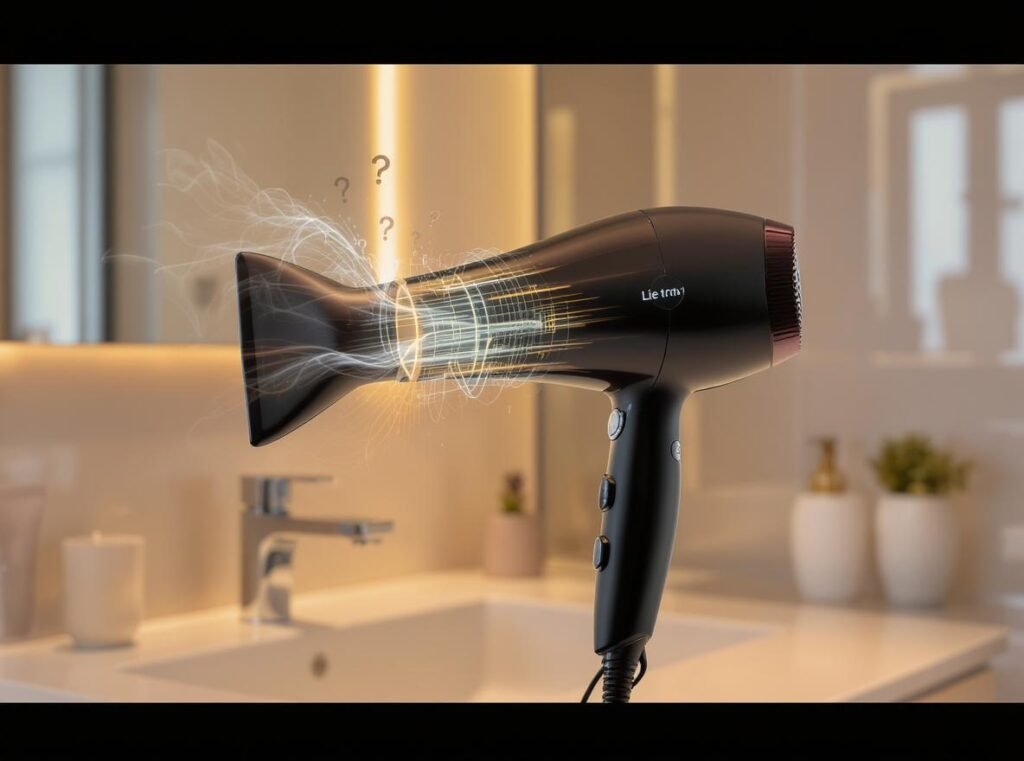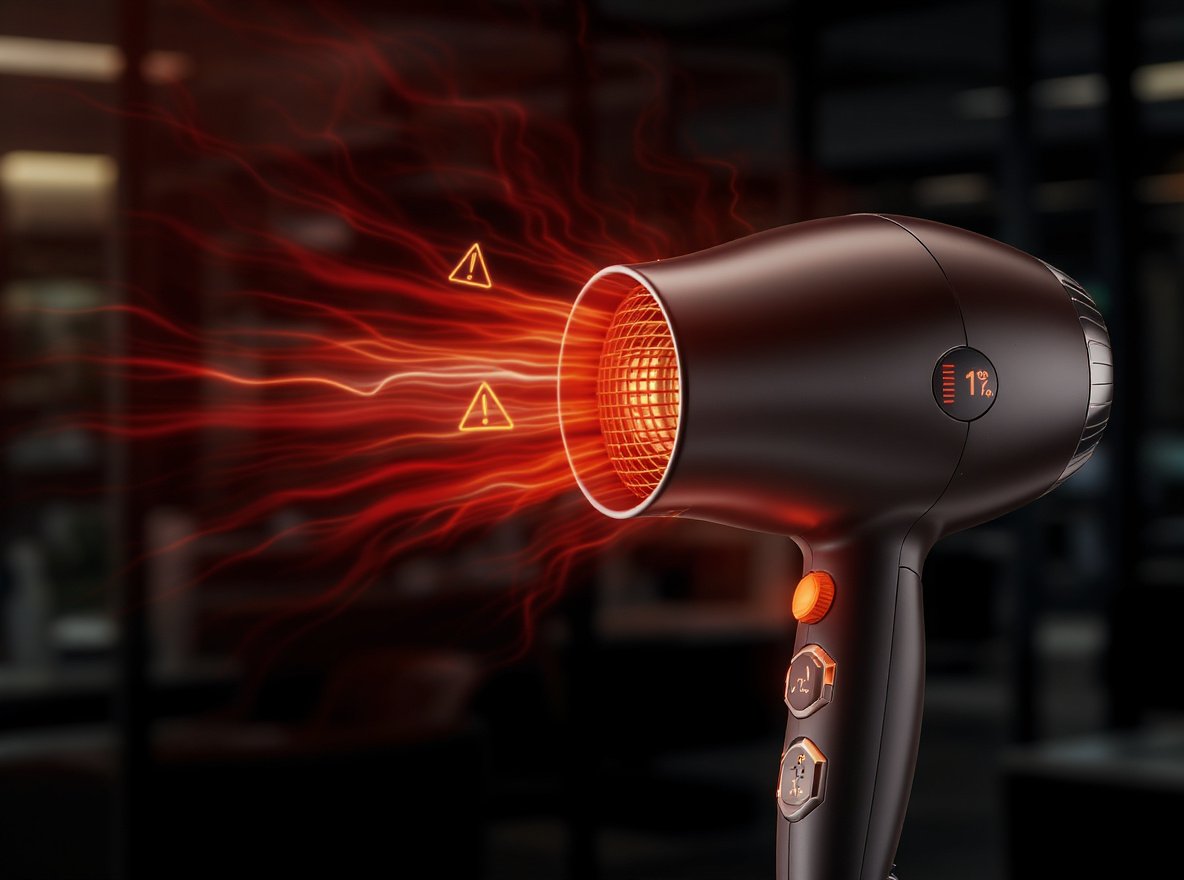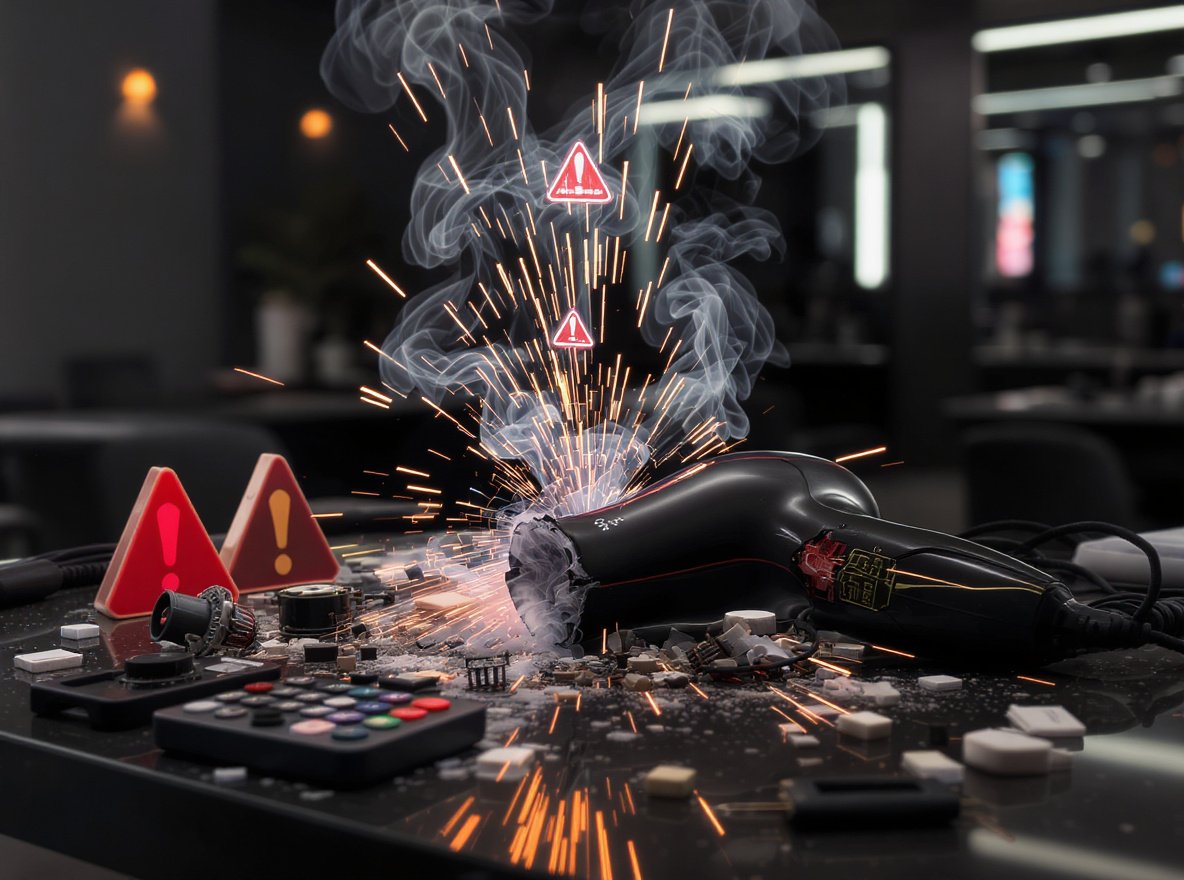Your trusty hair dryer suddenly starts making weird sounds that make you worry about safety. These strange noises aren’t just annoying—they’re warning signs that your hair dryer needs attention before it potentially breaks down or becomes unsafe.
Strange noises from your hair dryer usually indicate a mechanical issue or internal buildup. The most common causes include debris (like lint or hair) trapped inside, loose internal parts, or worn-out motor bearings. Over time, dust and dirt can accumulate, especially around the air intake and motor, leading to abnormal sounds and reduced performance.
Don’t ignore these warning signs—understanding what each sound means can save you money and prevent potential safety hazards.
Table of Contents
ToggleWhat Are the Most Common Strange Noises Hair Dryers Make?
Hair dryers can produce various unusual sounds, each pointing to different underlying issues that require specific attention.
The most common strange noises include rattling (caused by loose screws or components), high-pitched squealing (motor or bearing issues), buzzing (debris caught in fan or motor), and crackling or popping sounds (dust or hair burning on heating elements). Each sound pattern helps identify the specific problem affecting your hair dryer’s performance.
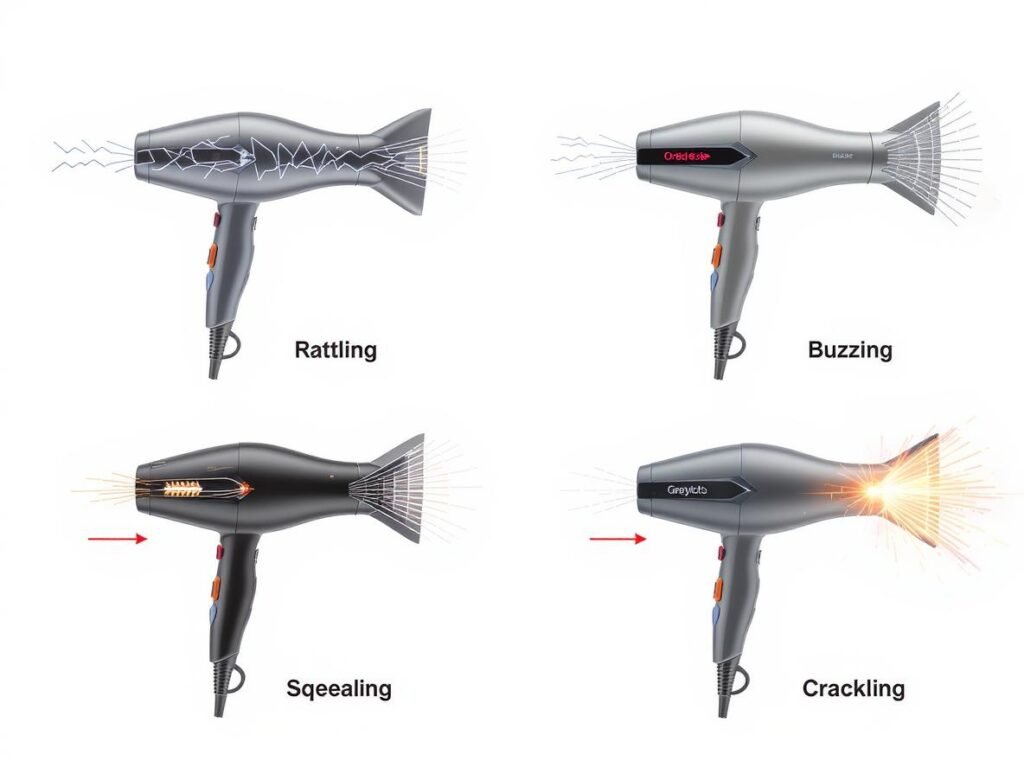
Understanding Different Noise Types
Rattling Sounds
Rattling often indicates loose screws or components inside the dryer. This creates a distinctive shaking sound that worsens when the unit is moved or operated at different speeds.
High-Pitched Squealing
Sharp, piercing sounds usually point to motor problems or worn-out bearings. This type of noise suggests internal mechanical components are failing or need lubrication.
Buzzing Noises
Buzzing frequently results from debris such as lint or hair caught in the fan or motor area. This sound often accompanies reduced airflow performance.
Crackling or Popping
These sounds can result from dust or hair burning on the heating element, which poses both performance and safety concerns.
| Noise Type | Primary Cause | Warning Level | Immediate Action |
|---|---|---|---|
| Rattling | Loose internal components | Medium | Inspect for loose screws |
| Squealing | Motor/bearing problems | High | Stop use, seek repair |
| Buzzing | Debris in fan/motor | Medium | Clean thoroughly |
| Crackling | Burning debris on element | High | Stop use immediately |
Why Do Hair Dryers Start Making These Strange Noises?
Multiple factors contribute to unusual hair dryer sounds, with most stemming from accumulated debris, normal wear, or physical damage.
Hair dryers start making strange noises primarily due to debris buildup (dust, lint, and hair getting sucked into air intake), wear and tear of internal components over time, and physical damage from dropping or rough handling. These issues compound over time, especially in frequently used or lower-quality dryers.
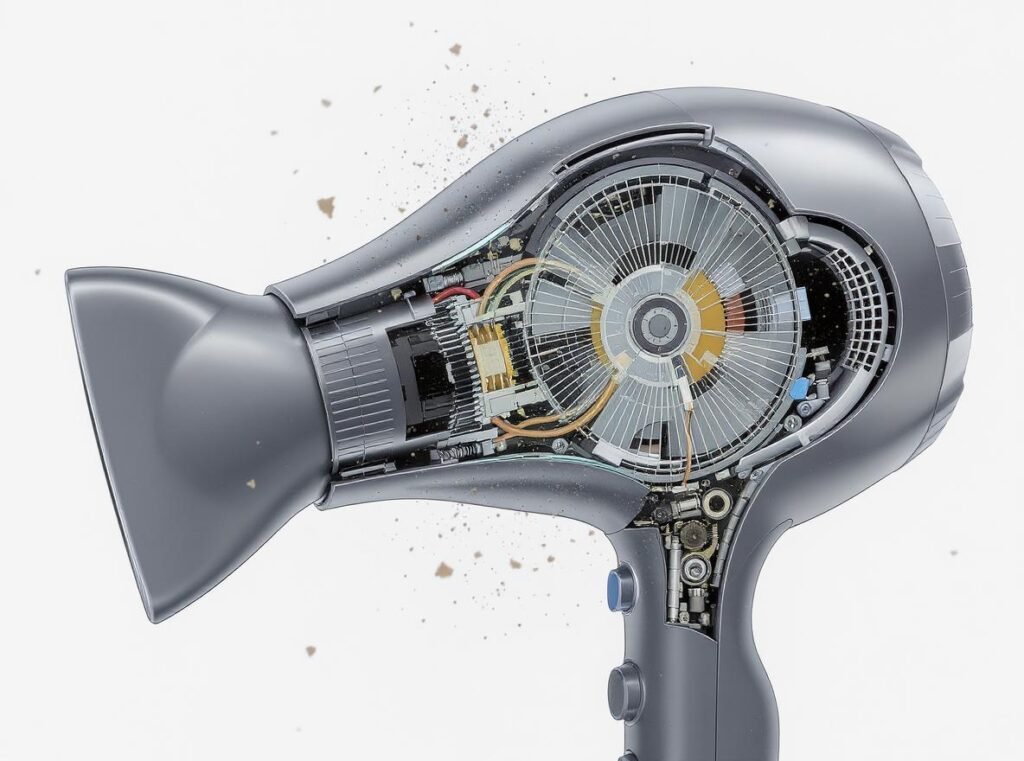
Primary Causes of Hair Dryer Noise
Debris Buildup
Dust, lint, and hair get sucked into the air intake, clogging vents and interfering with the fan or motor operation. This buildup forces the motor to work harder, creating unusual sounds and reducing efficiency.
Normal Wear and Tear
Over extended use, components naturally degrade:
- Motor bearings lose lubrication and develop friction
- Internal fans become unbalanced or loose
- Screws and fasteners gradually loosen from vibration
- Electrical connections may deteriorate
Physical Damage
Dropping the dryer or repeated rough handling can cause internal parts to shift or break. Even minor impacts can misalign components, leading to rattling or grinding sounds.
Age-Related Deterioration
Lower-quality dryers show signs of wear more quickly:
- Plastic components become brittle and crack
- Metal parts develop corrosion or fatigue
- Seals and gaskets lose effectiveness
- Overall performance degrades noticeably
How Can I Identify What’s Causing My Hair Dryer’s Strange Noises?
Proper diagnosis requires systematic inspection to pinpoint the exact source of unusual sounds.
Start by unplugging the hair dryer, then check for visible damage, remove accessible filters to look for debris buildup, gently shake the unit to detect loose parts, and listen carefully to identify the specific noise type. This methodical approach helps determine whether the issue requires simple cleaning or professional repair.
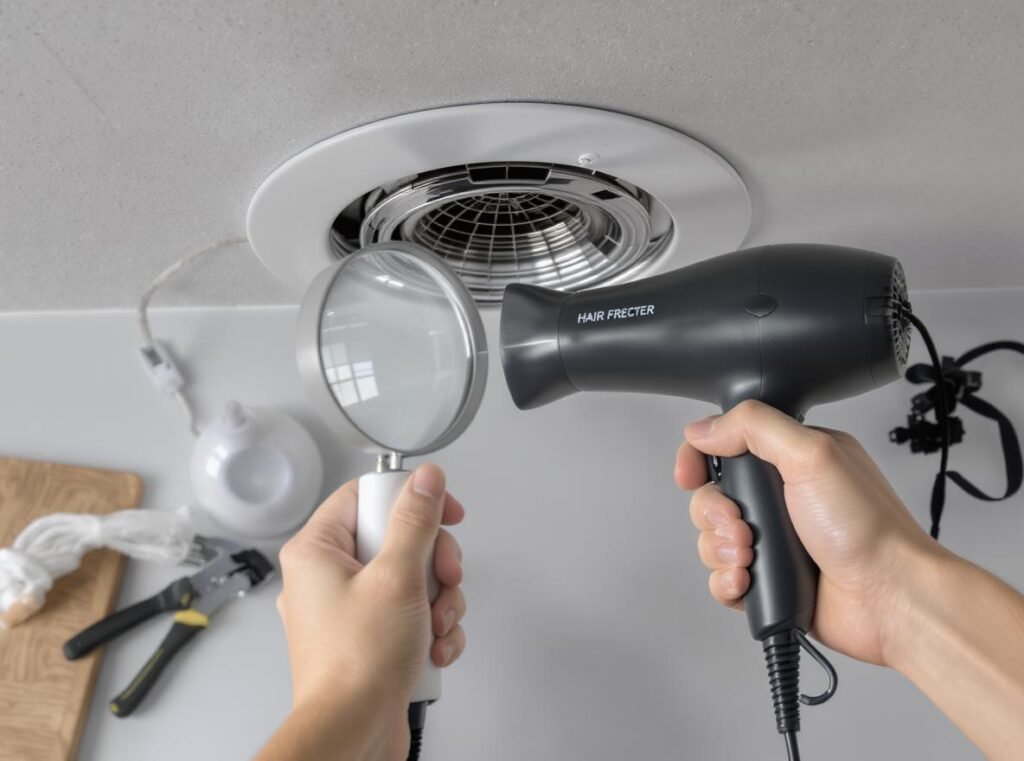
Step-by-Step Diagnostic Process
Safety First
Always unplug the hair dryer before beginning any inspection. Allow the unit to cool completely if it was recently used, and work in a well-lit area.
Visual Inspection Checklist
- Examine the cord, plug, and housing for visible damage
- Check air intake vents for obvious blockages
- Look for cracks in the plastic housing
- Inspect attachment points for loose connections
Filter and Internal Check
Remove the filter or back cover if accessible:
- Look for lint, hair, or dust buildup
- Check for foreign objects that might have been sucked in
- Examine fan blades for damage or obstruction
- Note any loose or disconnected internal components
Sound Analysis Test
- Gently shake the dryer to detect rattling from loose parts
- Listen for specific noise patterns when different components are accessed
- Note whether sounds occur continuously or intermittently
| Diagnostic Step | What to Check | Red Flags |
|---|---|---|
| External inspection | Cord, housing, vents | Cracks, fraying, blockages |
| Filter removal | Debris, foreign objects | Heavy buildup, damaged parts |
| Shake test | Internal rattling | Loose components moving |
| Sound identification | Noise type and timing | Grinding, electrical crackling |
What Should I Do When My Hair Dryer Makes Strange Noises?
Taking appropriate action depends on your diagnostic findings, but safety considerations should guide every decision.
Clean the hair dryer by removing visible debris from air intake and filter using a soft brush, tighten any accessible loose screws if you’re comfortable doing so, test the unit after cleaning, and seek professional help if noises persist or indicate motor or electrical issues. Never continue using a hair dryer that shows signs of electrical problems or burning.
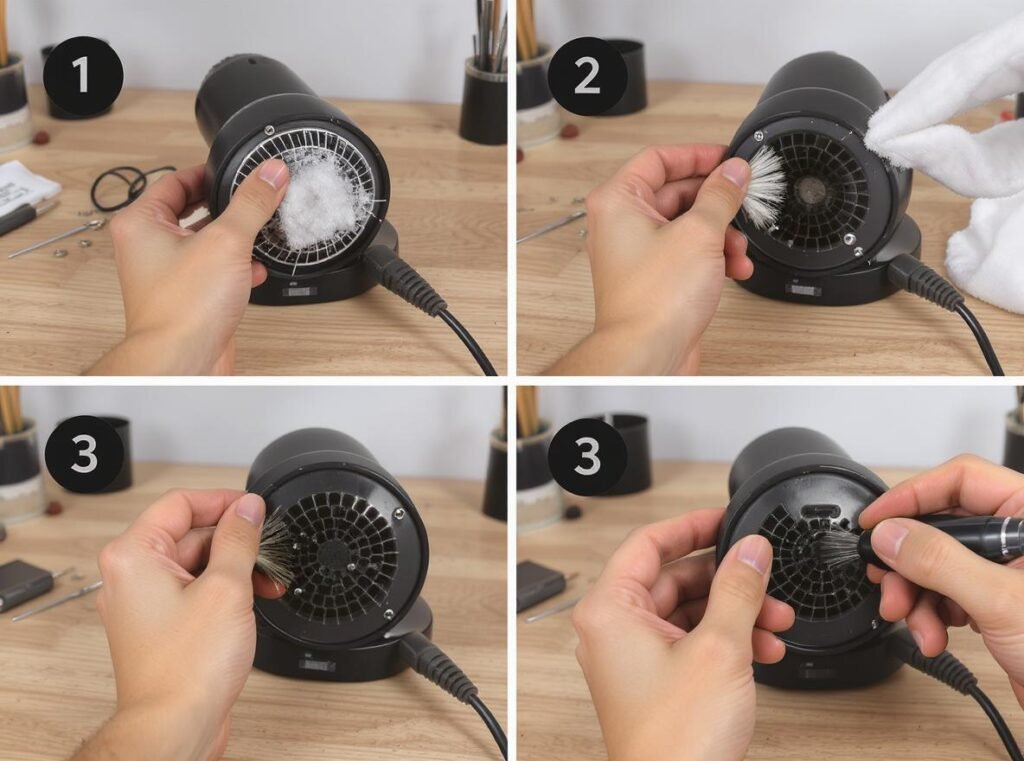
Immediate Response Protocol
Emergency Situations
Stop using immediately and seek replacement if you notice:
- Burning smells accompanying strange sounds
- Visible sparks or electrical crackling
- Smoke emission during operation
- Extremely hot housing temperature
Basic Troubleshooting Steps
For minor issues, try these solutions:
- Clean the filter and vents using a soft-bristle brush or small paintbrush
- Remove lint and dust from all accessible internal components
- Tighten loose screws if you can safely access them
- Wipe removable parts with a damp (not wet) cloth and dry thoroughly
Testing After Cleaning
- Plug the unit back in and test at low speed first
- Listen for changes in noise patterns
- Check for improved airflow performance
- Monitor for any returning symptoms during initial use
Professional Consultation
Consult repair technicians when experiencing:
- Persistent strange noises after thorough cleaning
- Decreased performance alongside unusual sounds
- Multiple symptoms occurring simultaneously
- Any electrical-related concerns
How Do I Properly Clean and Maintain My Hair Dryer to Prevent Noise Issues?
Regular maintenance prevents most noise problems and significantly extends your hair dryer’s operational life.
Clean the filter and vents at least once a month for frequent use (every couple of months for occasional use), use a soft-bristle brush to remove debris, wipe components with damp cloth and dry thoroughly, and store properly in dust-free areas without tightly wrapping cords. Consistent maintenance prevents most mechanical issues before they develop.
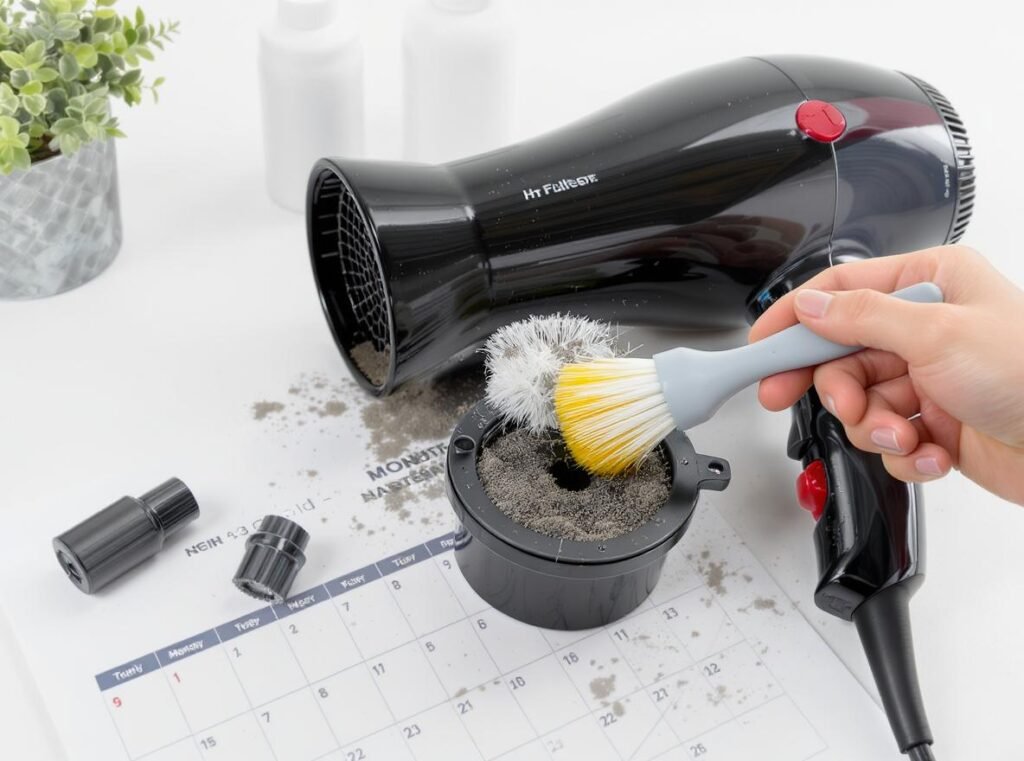
Complete Maintenance Schedule
Monthly Cleaning Routine
For frequently used hair dryers:
- Remove and clean the filter thoroughly
- Brush out air intake and exhaust vents
- Check for loose screws or connections
- Inspect cord and plug for wear signs
Bi-Monthly Maintenance
For occasional users:
- Deep clean all accessible internal components
- Remove accumulated dust from motor area
- Check housing for cracks or damage
- Test all heat and speed settings
Proper Cleaning Technique
- Use soft-bristle brushes or small paintbrushes for delicate areas
- Avoid using water directly on electrical components
- Ensure all parts are completely dry before reassembly
- Work in good lighting to spot potential issues
Storage Best Practices
Proper storage prevents many problems:
- Store in dry, dust-free locations
- Avoid wrapping cords tightly around the unit
- Use protective cases in professional environments
- Keep away from extreme temperatures
| Maintenance Task | Frequency | Tools Needed | Expected Time |
|---|---|---|---|
| Filter cleaning | Monthly | Soft brush, cloth | 5 minutes |
| Vent cleaning | Monthly | Small brush, vacuum | 10 minutes |
| Deep cleaning | Quarterly | Brushes, cloths, tools | 20 minutes |
| Professional service | Annually | N/A | Varies |
When Should I Replace My Hair Dryer Instead of Trying to Fix the Noise?
Knowing when replacement is more cost-effective than repair saves money and ensures continued safety.
Replace your hair dryer when persistent strange noises continue after cleaning and maintenance, burning smells or visible damage appear, or decreased performance accompanies noise issues—especially in cheaper models nearing the end of their lifespan. Professional assessment can help determine whether repair costs justify the expense versus replacement.
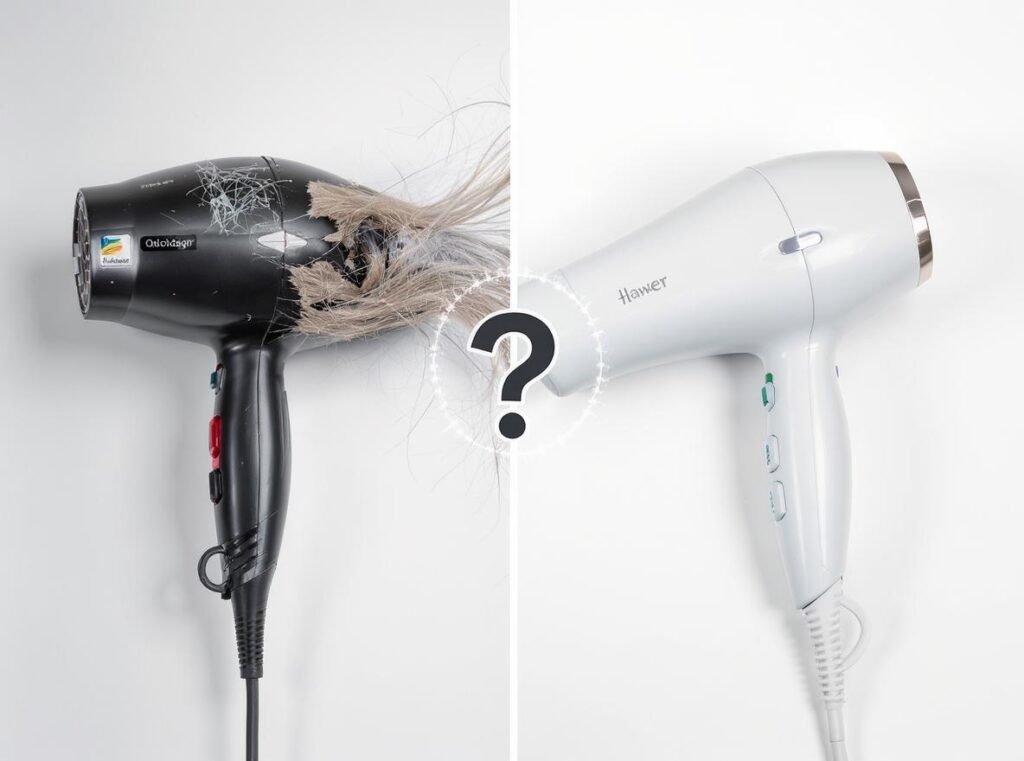
Clear Replacement Indicators
Safety-Related Issues
Replace immediately when experiencing:
- Burning smells that persist after thorough cleaning
- Visible damage like cracks in housing or frayed cords
- Electrical problems such as sparking or shorts
- Excessive heat generation during normal operation
Performance Degradation
Consider replacement when noticing:
- Significantly reduced heat output or airflow
- Inconsistent operation across different settings
- Multiple mechanical problems occurring together
- Frequent overheating or automatic shutdowns
Cost-Benefit Analysis
Evaluate repair versus replacement:
- Repair costs exceeding 50% of new unit price
- Age of unit (typically replace after 5+ years heavy use)
- Availability of replacement parts
- Overall condition and remaining useful life
Quality Considerations
Cheaper models often show these replacement indicators:
- Plastic components becoming brittle and cracking
- Motor performance declining rapidly
- Internal components failing in clusters
- Safety features becoming unreliable
For wholesale buyers seeking reliable replacement options, our product collection features professional-grade hair dryers designed for extended commercial use with minimal maintenance requirements.
What Are the Best Practices for Preventing Hair Dryer Noise Problems?
Proactive care and proper usage habits prevent most noise issues from developing initially.
Prevent hair dryer noise problems by regularly cleaning air filters and vents, avoiding drops or impacts that damage internal components, storing in dry dust-free places without tight cord wrapping, inspecting periodically for wear signs, and using appropriate power and heat settings to minimize motor strain. These practices significantly extend equipment life while maintaining quiet operation.
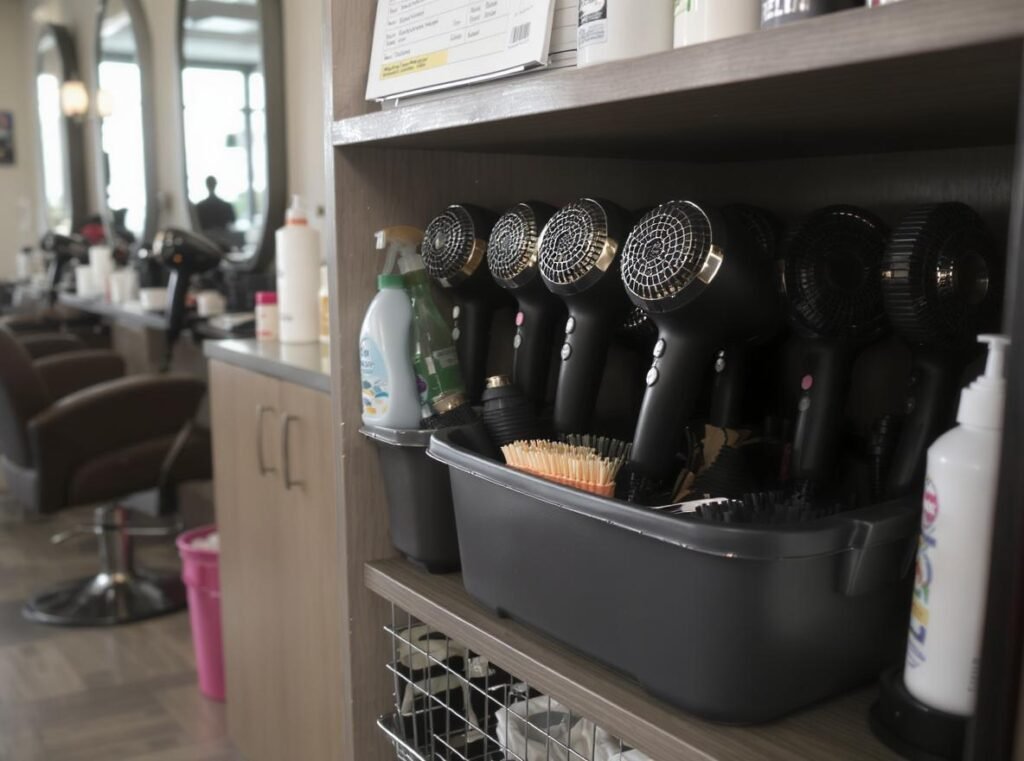
Comprehensive Prevention Strategy
Daily Usage Best Practices
- Use lowest effective heat and speed settings for your hair type
- Maintain proper distance from hair to prevent debris intake
- Allow unit to cool completely before storage
- Avoid blocking air vents during operation
Handling and Storage Guidelines
- Protect from physical impacts and drops
- Store with adequate ventilation space
- Use cord management that prevents kinking
- Keep away from humid environments when possible
Environmental Considerations
- Maintain clean drying areas to reduce airborne debris
- Ensure adequate ventilation during use
- Avoid using in dusty or lint-heavy environments
- Consider air quality in professional settings
Professional Environment Protocols
For salon and commercial use:
- Implement equipment rotation schedules
- Train staff on proper handling techniques
- Schedule regular professional maintenance
- Monitor usage hours for replacement planning
- Maintain inventory of backup units
Quality Investment Benefits
Higher-quality hair dryers typically offer:
- Better filtration systems that reduce debris accumulation
- More robust motor designs that resist wear
- Superior construction that withstands daily use
- Advanced safety features that prevent damage
Distributors and retailers looking for reliable hair dryers that minimize customer complaints should consider our P1C high-speed hair dryer, engineered with advanced motor technology and superior filtration to reduce operational noise while delivering consistent professional performance.
Summary
Strange noises from your hair dryer indicate mechanical issues or debris buildup that require prompt attention to prevent further damage or safety hazards. Most unusual sounds stem from lint accumulation, loose internal components, or normal wear and tear, but proper diagnosis helps determine whether cleaning, repair, or replacement offers the best solution. Regular maintenance including monthly filter cleaning, proper storage, and gentle handling prevents most noise problems while extending your hair dryer’s useful life.
For wholesalers seeking reliable, quiet hair dryers that minimize customer service issues, explore our complete product range or contact us for bulk pricing on commercial-grade units designed for extended professional use with minimal maintenance requirements.

